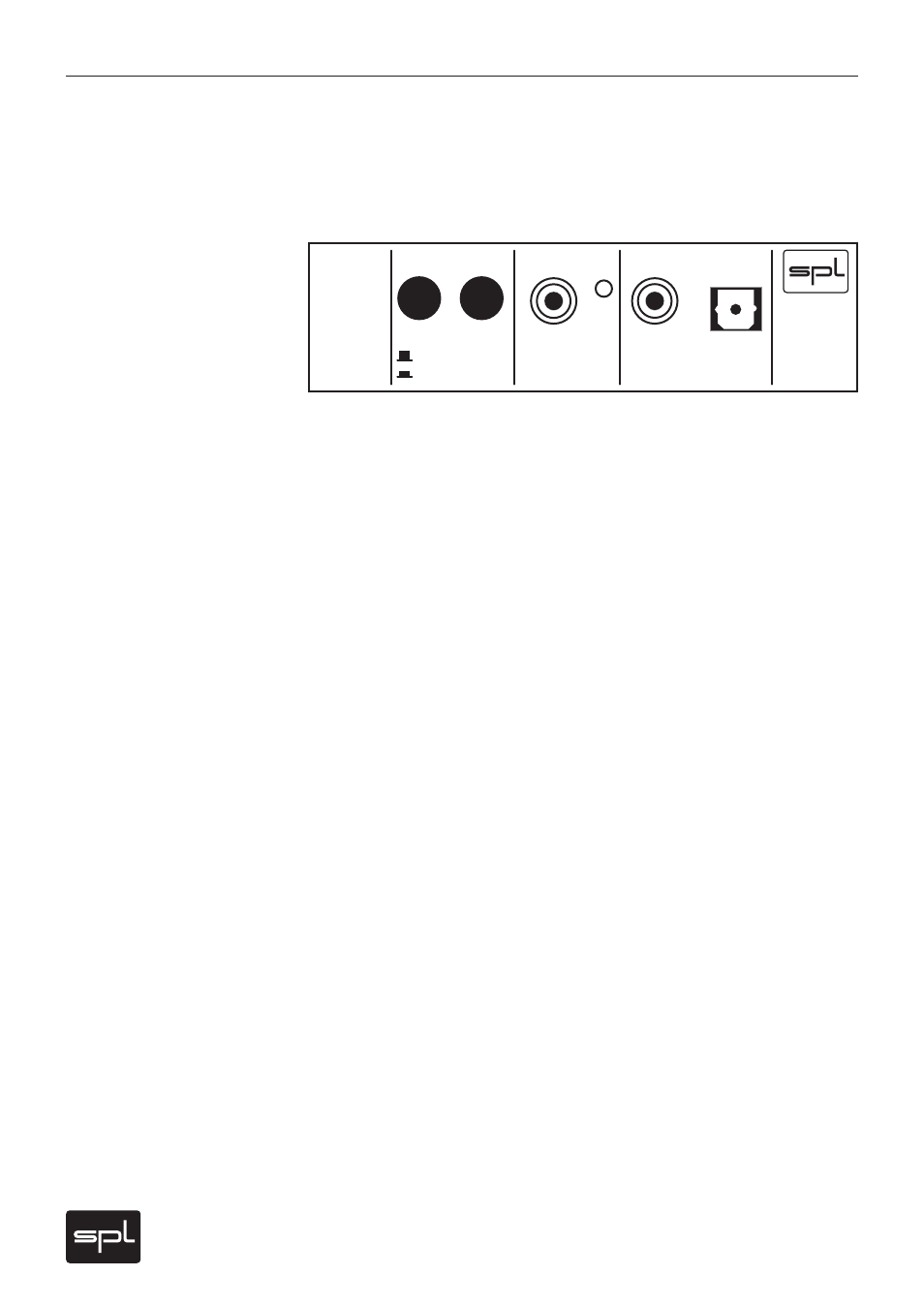Options, A/d converter, i/o transformers, 22 track one – SPL Track One Channel Strip User Manual
Page 22: Information on i/o transformers

22
Track One
Please note that you can order products with optional equipment from all dealers, even if they
do only list standard product versions, for example in an online store. Please contact your
dealer or SPL before you place an order. Optional equipment can also be installed after sales.
Available option for the Track One, model 2960:
• 24 bit/96 kHz A/D converter (user installation possible).
• Lundahl input and output transformers (installation only by qualified technicians or SPL).
24/96 AD converter, model 2376
The optional converter card provides a digital output. Output signals are delivered via a
S/P-DIF output through two sockets: one RCA socket and one optical socket. The converter
provides 24 bit signals. All common sample rates can be selected (see below). Highly accurate
quartz oscillators ensure a clean, low-jitter master clock.
SAMPLE RATE:
The A/D converter allows you to select among the four most common sample
rates of 44.1, 48, 88.2 and 96 kHz. The 44.1/48 button selects one of the two basic sample
rates (out: 44.1 kHz; in: 48 kHz). The x2 button doubles these sample rates to select 88.2 or
96 kHz respectively.
DIGITAL OUTPUTS:
The converted S/P-DIF signal is routed in parallel to the RCA and optical
outputs. The signal is in professional format with no sample rate data in the status block.
SYNC INPUT:
Since this is an AD converter,
the SYNC INPUT is no audio signal input
. The
SYNC INPUT allows you to feed the converter with an external sample rate. Connect an S/P-DIF
output from your master source (e.g. DAW interface) to the SYNC input. The AD converter will
automatically switch to the same sample rate that is received. The A/D converter 2376 is not
equipped to accept Word Clock synchronization.
The yellow Sync Lock LED illuminates when a valid sync signal is present at the SYNC INPUT
and the converter is automatically synchronized to the external sample rate.
To prevent interference, the internal oscillators are automatically disabled when an external
clock signal is present. If the sync signal is no longer present (e.g. in the case of a dropout),
the converter automatically reverts to the sample rate selected via the converter’s control
switches.
Information on I/O transformers
We think a good part of the “warmth” that is commonly associated with vintage gear comes
from transformers. With transformers the low end and lower mids sound rounder, full-bodied
with more punch. The top end gets a silky touch and benefits from improved presence without
sounding boosted. Reasons are reduced odd harmonics (which produce harsh top end impres-
sions) and a slower characteristic compared to electronic stages which causes a more volumi-
nous sound. We recommend transformers especially for vocals while electronic stages can be
better for highest precision in signal transmission (transients), but in the end it’s a question of
personal taste, applications or for example which microphones are in use.
Used in SPL preamps or channel strips, the input transformers add ca. 14dB gain (depending
on the microphone). This must be added to the scaled values. The additional passive gain
relieves the complete unit permanently at any gain level. The higher gain levels are also
beneficial with ribbon microphones. That’s why the input transformer is more important in
preamps, but to benefit from all possible sonic effects and full operational safety, both input
and output should be equipped with transformers.
Options
A/D converter, I/O transformers
OPTICAL
SPDIF
SPDIF
x2
48
44,1
24/96 AD
Converter
DIGITAL OUTPUTS
SYNC INPUT
SAMPLE RATE
INPUT
OUTPUT
OUTPUT
SYNC
LOCK
Model
2376
Made in
Taiwan
